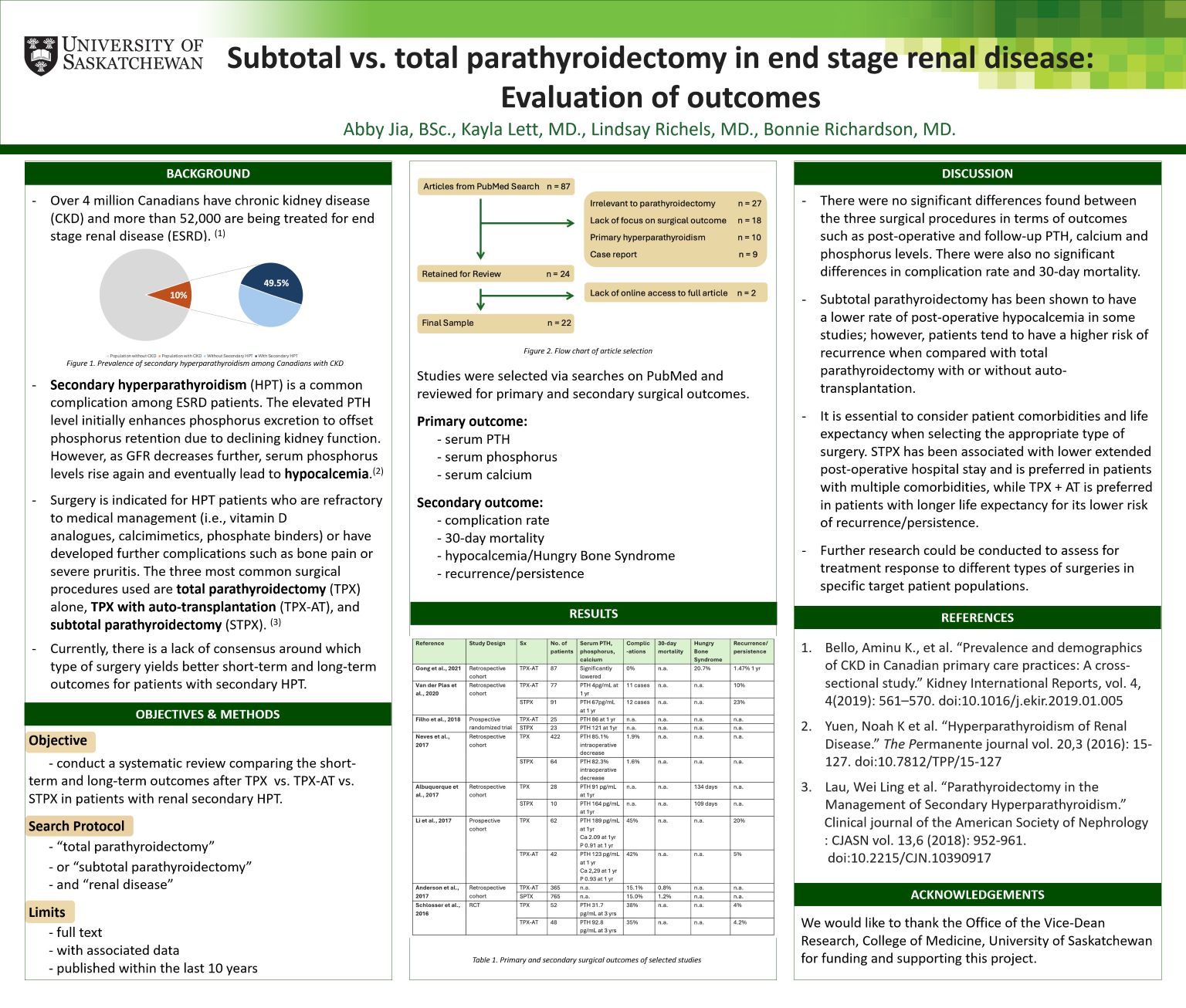
Subtotal vs. total parathyroidectomy in end stage renal disease: evaluation of outcomes
Abby Jia
Secondary hyperparathyroidism is a common complication in patients with end-stage renal disease with long term sequalae including renal osteodystrophy and vascular calcification. Parathyroidectomy surgeries are the only definitive treatment and are offered to patients that are refractory to medical management. Currently, there is a lack of consensus around which type of surgery yields better patient outcomes, warranting the need for thorough systematic review. In this study, we selected and reviewed 22 articles from PubMed on subtotal parathyroidectomy, total parathyroidectomy and total parathyroidectomy with auto transplantation. We assessed for primary (serum PTH, calcium, phosphorus) and secondary outcomes (complication rate, 30-day mortality, hypocalcemia, recurrence). We found no significant differences in post-operative biomedical markers including PTH, calcium and phosphorus levels. Studies showed that subtotal parathyroidectomy had a lower rate of hypocalcemia and fewer extended hospital stays, while total parathyroidectomy with auto-transplantation had a lower rate of recurrence and persistence. Future research should be conducted to assess for treatment response to different types of surgeries in specific target patient populations.
